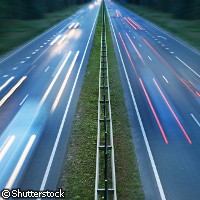New computer system alerts drivers to danger
Scientists from six European countries have developed a new computer system that allows vehicles to learn from driver behaviour. When detecting a problem in a curve or an obstacle on the road, for example, an on-board computer will generate an alarm signal, giving drivers additional time to react. These signals will be adapted to individual drivers' styles. The computer system was developed by the DRIVSCO project ('Learning to emulate perception action cycles in a driving school scenario') which was funded under the 'Information society technologies' theme of the Sixth Framework Programme (FP6). The project brought together researchers from Belgium, Denmark, Germany, Spain, Italy and Lithuania. The goal of DRIVSCO has been to devise, test and implement a strategy for combining adaptive learning mechanisms with conventional control. This starts with a fully operational human-machine interfaced control system and concludes with an improved, largely autonomous system. On the road, the concept of DRIVSCO has been to allow a vehicle to learn from the user's driving habits when facing a curve or an approaching intersection, a pedestrian or another vehicle. Regardless of the driver, researchers say that the system can adapt to a pattern of driving behaviour, using predictive mechanisms in a proactive way. According to data from the European Car Council, approximately 42% of fatal traffic accidents happen at night, which is worrying as there are significantly reduced traffic levels at this time. The accident level is due, among other factors, to reduced visibility during night driving. In such an instance, the DRIVSCO system may detect a deviation in the driver's style, and ascribe that to a lack of visibility, which may result from using the lower headlights setting. The car's night vision system, on the other hand, is much more powerful and has a longer range. This allows the DRIVSCO system to generate alarm signals to warn the driver of 'unusual behaviour when approaching a curve', or that a potentially dangerous object has been detected. Artificial vision is an important component of the system, and Spanish researchers with DRIVSCO from the University of Granada worked on this project component. Their solution was a single chip device which receives input pictures and produces a first 'scenario interpretation' in terms of three-dimensional depth, local movement, image lines and other criteria. This device was developed so that it may be used in different types of vehicles. The team also used 'reconfigurable hardware', so that the system can adapt itself to new fields of application. During the tests, a group of drivers used the DRIVSCO system so that cars fitted with the system could learn from their individual driving styles. A differential Global Positioning System (GPS) and various detection systems were also installed on the vehicle so that the researchers could observe in detail the style of driving and the performance of the system. The first tests have offered promising results and have proved the usefulness of the new concept. Professor Eduardo Ros Vidal from the University of Granada, said, 'We do not intend to develop automatic driving systems (as it would be very difficult for insurance agencies and car companies to come to an agreement in the event of a crash), but advanced driving assistance systems.' DRIVSCO's primary goal is to avoid car accidents and contribute to keeping drivers alert on the roads.
Countries
Belgium, Germany, Denmark, Spain, Italy, Lithuania



